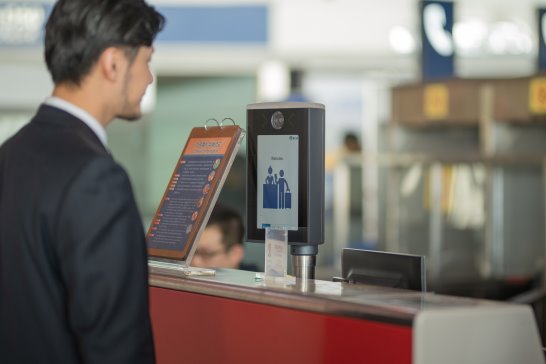BEIJING, 21 August 2020: A new completely contactless experience for passengers travelling through Beijing Capital International Airport (BCIA) should make air travel safer.
SITA, a technology provider for the air transport industry, announced Thursday what it called its most extensive biometric deployment to date that focuses on the busiest airport in China and the second busiest in the world.

BCIA has completely automated the entire passenger journey using SITA technology – from check-in and bag drop through to immigration, security, and finally boarding. Passengers only need to enrol once during check-in, then experience a seamless journey through the airport enabled by facial recognition.
Improved processing efficiency means shorter queuing time and more social distancing for all passengers. An added benefit during the COVID-19 era is that the process removes the need to touch any airport equipment, reducing the risk of infection.
SITA Smart Path has already proven that it can significantly speed up passenger processing at BCIA, processing over 400 passengers boarding an Airbus A380 in less than 20 minutes.
The SITA Smart Path solution is the largest rollout of its kind and enables passengers to glide through the airport using only facial recognition as their boarding pass, eliminating the need for physical touchpoints and minimising the risk of COVID-19 infection for passengers.
The deployment included the implementation of over 600 biometric checkpoints through the airport including 250 lanes of automatic gates, 80 kiosks, and 30 self-bag drop stations which will process passengers from international flights.
The biometric technology is currently activated across multiple checkpoints at BCIA, including manual check-in, self-service check-in, bag drop, restricted access, security, and boarding. From an airport efficiency view, the solutions have improved capacity and created a low-touch (paperless) environment for all while allowing staff to focus on passengers who need help with their travel.
As China emerges from the Covid-19 pandemic, a growing number of passengers are returning to the skies. To sustain the industry recovery, airlines, airports, ground handlers and others in the industry must prioritise passenger safety, convenience and confidence. BCIA is the largest airport in China, with passenger volume exceeding 100 million between 2018 and 2020. It is positioned as the international hub airport in the overall design of the Jing-Jin-Ji airports group. To date, it serves 31 domestic airlines and 62 foreign airlines, with 133 international routes, and 161 domestic routes.






